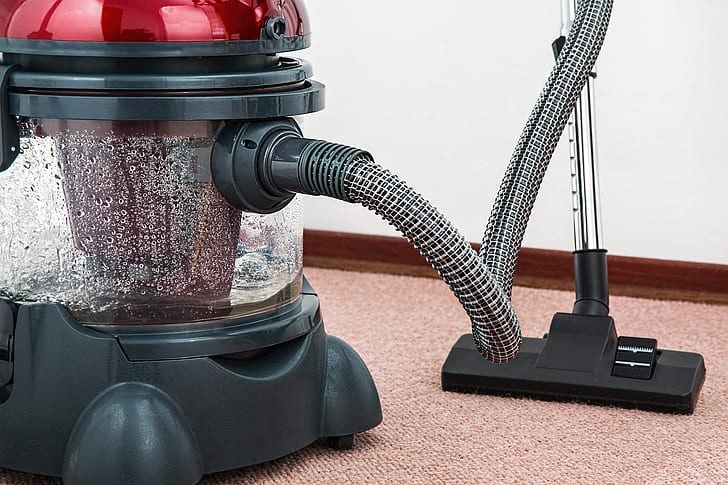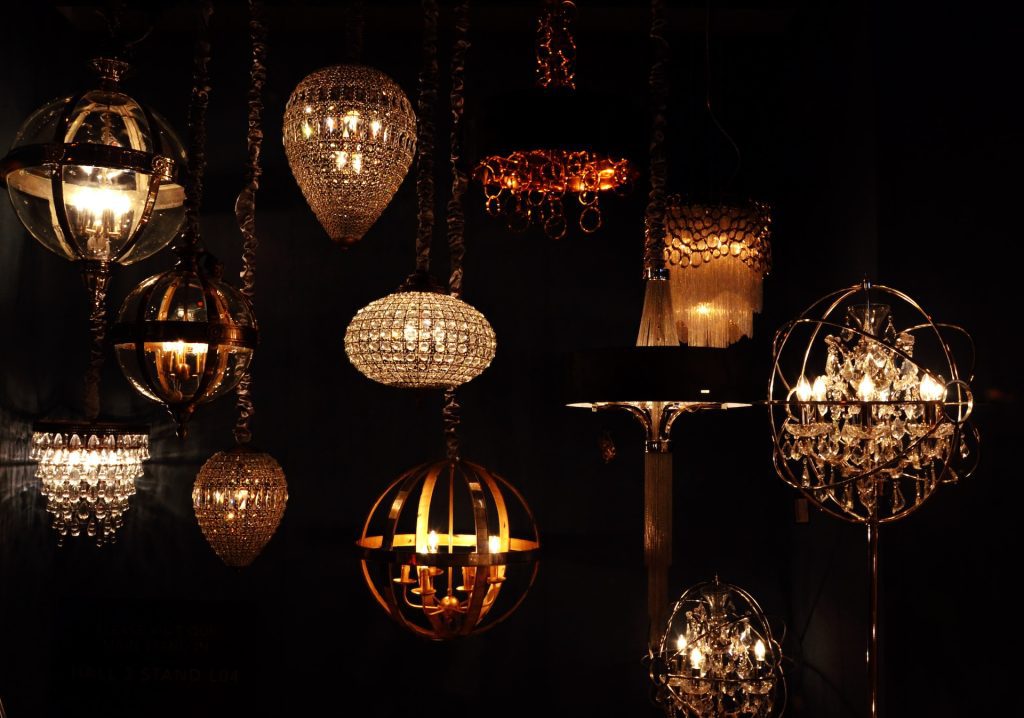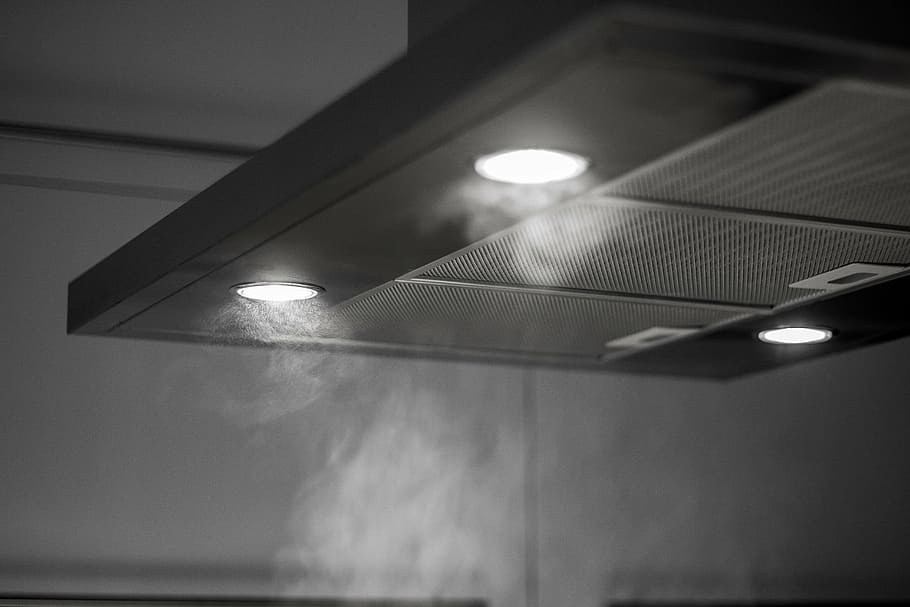A home library is a sanctuary of knowledge and imagination, offering endless hours of escape and enrichment. Contrary to popular belief, establishing this personal haven need not be costly or complicated.
Far from the grandiose, exclusive spaces many imagine, a home library can be a simple, cozy corner that reflects one's love for books without breaking the bank or requiring extensive efforts.
This guide is designed to help you effortlessly and economically set up your own home library. So, let’s begin:
PLANNING YOUR HOME LIBRARY
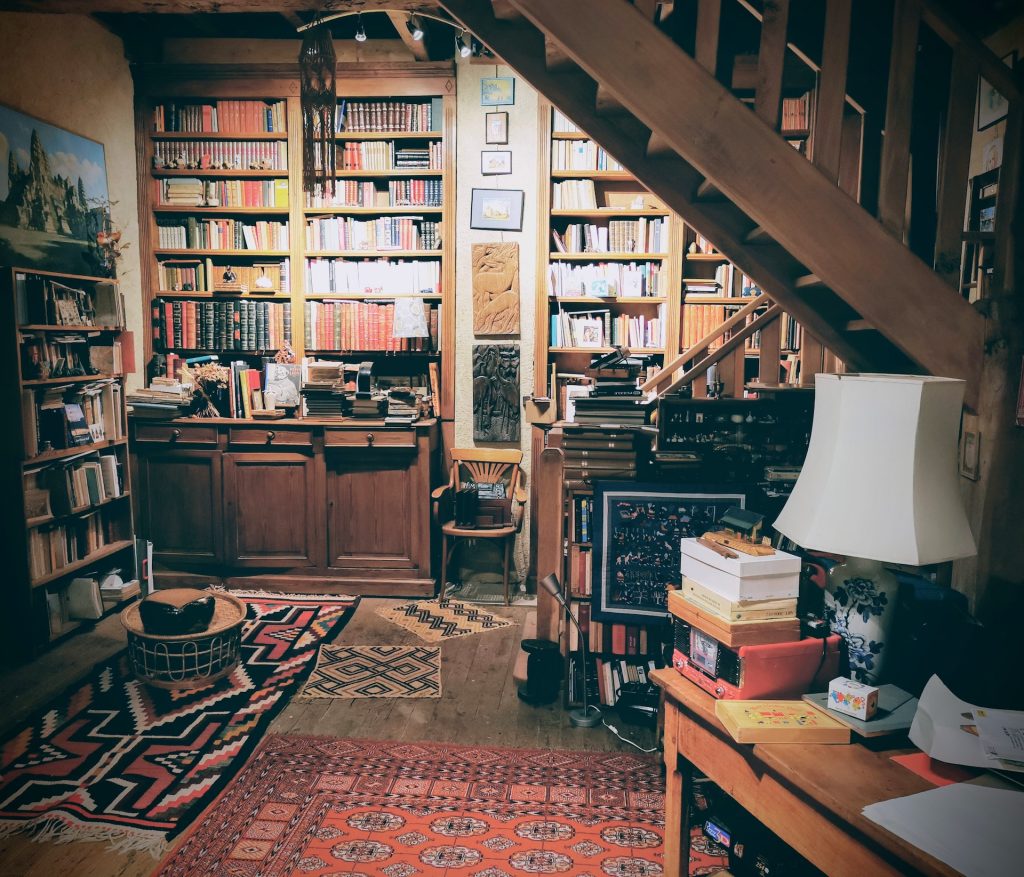
Assessing Your Space
Choosing the perfect location for your home library is crucial. It sets the foundation for creating a comfortable and inviting space dedicated to your books. Here are some tips to help you choose the right location:
- Consider Lighting: Select a spot with good natural light to create a warm, welcoming atmosphere. Near a window is ideal, but avoid direct sunlight that can damage books.
- Seek Quiet: A quiet corner or a room with minimal noise is preferable for a peaceful reading environment.
- Think About Comfort: Choose a location where you can envision yourself spending hours reading. A cozy nook or a room with a comfortable chair can be perfect.
- Avoid High Traffic Areas: To maintain the tranquility of your library, avoid placing it in areas of high household traffic like the kitchen or hallway.
- Utilize Unused Spaces: Don’t overlook underused areas like an alcove, a spare room, or even a large closet that can be transformed into a quaint reading space.
Once you've identified the potential spots, it’s important to measure and utilize the available space effectively:
- Measure the Space: Start by measuring the dimensions of your chosen area. Note the height, width, and depth of the space to ensure you choose shelves and furniture that fit comfortably.
- Plan for Shelves: Based on your measurements, plan how many bookshelves you can accommodate. Consider both floor-standing and wall-mounted options depending on your space constraints.
- Consider Room for Growth: Leave some empty space on your shelves for future book acquisitions. A library is an evolving space, and it’s important to account for its growth.
- Functional Layout: Arrange the furniture and shelves in a way that makes the space both functional and aesthetically pleasing. Ensure there’s enough room to move around and that the seating is positioned for optimal reading comfort.
Setting a Budget
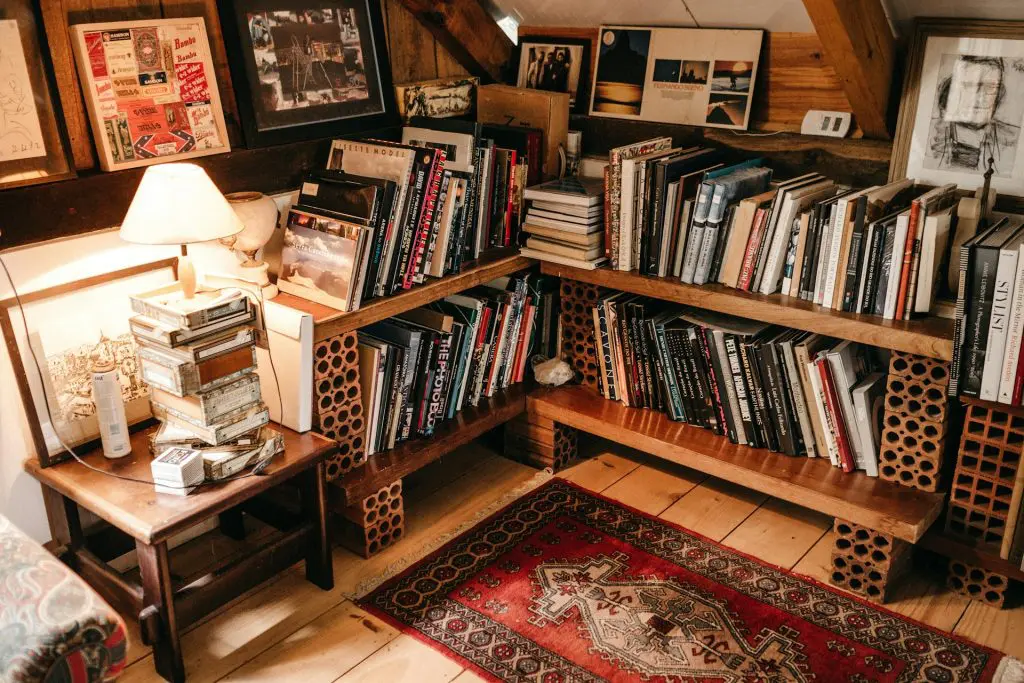
Establishing a budget is vital in creating your home library, as it guides your decisions and helps avoid overspending while still achieving your desired outcome. Here are some ideas for budget-friendly library setups:
- Shop Second-Hand: Look for shelves and furniture at thrift stores, garage sales, and online marketplaces. Pre-owned items can add character and are often available at a fraction of the cost of new ones.
- DIY Shelving: If you're handy, consider building your own shelves. This can be more cost-effective and allows for customization to fit your space perfectly.
- Repurpose and Reuse: Get creative by repurposing other furniture items as bookshelves, such as old cabinets or ladders.
- Book Swaps and Library Sales: Acquire books affordably through swaps with friends or at library sales, where you can often find a wide range at low prices.
- Mix and Match: Instead of buying a complete set of matching furniture, mix and match different pieces for a unique and eclectic look that can be more cost-effective.
- Gradual Collection: Build your library gradually. Start with a few essential pieces and slowly add to your collection as your budget allows.
- Utilize Digital Resources: Incorporate digital reading resources like e-books or library digital loans, which can be more affordable or even free, thus reducing the need for physical space.
ACQUIRING BOOKS
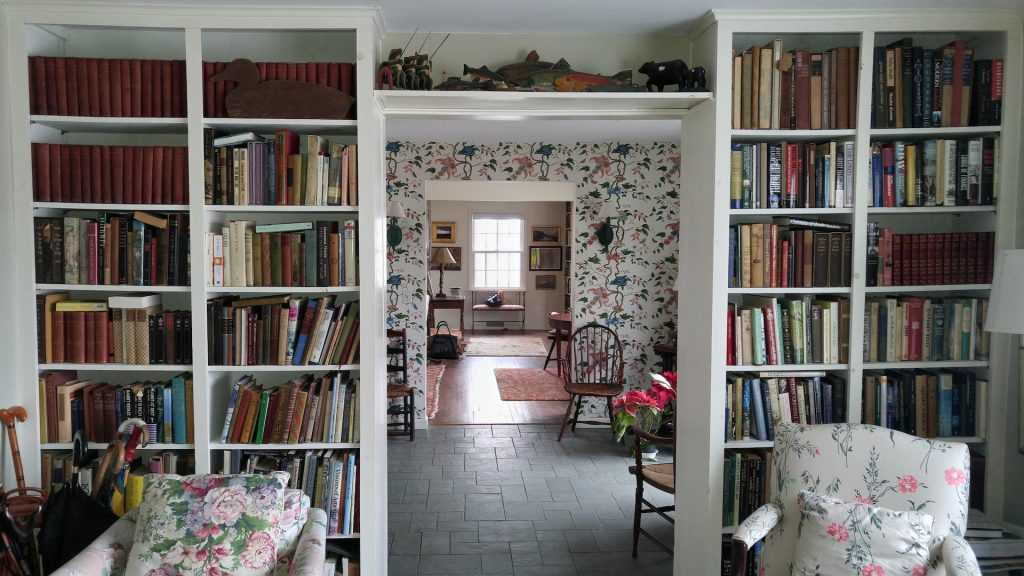
Building Your Collection
Creating a diverse and enriching book collection for your home library doesn't have to be an expensive endeavor. Here are some savvy ways to accumulate books affordably:
- Thrift Stores: These are treasure troves for book lovers. You can often find a wide range of books at significantly reduced prices.
- Library Sales: Many public libraries sell used books at low prices. These sales are a great way to support your local library while expanding your collection.
- Online Deals: Websites like eBay, Amazon’s used books section, and thriftbooks.com offer books at reduced prices. Also, keep an eye out for sales and special offers.
- Estate and Garage Sales: These can be excellent sources for unique finds and classic editions at bargain prices.
- Book Swaps: Participate in book swap events in your community or online. This is a cost-effective way to exchange books you’ve read for new reads.
- Free E-Book Resources: Websites like Project Gutenberg offer free digital copies of books that are in the public domain.
While it’s exciting to grow your collection, it’s important to balance quantity with quality:
- Prioritize Your Interests: Focus on genres or authors that you love. A smaller collection of books you’re likely to read is more valuable than a larger collection of books that don’t interest you.
- Check for Quality: Especially when buying used books, check for damage or excessive wear. It's better to have books that are in good condition and will last longer in your library.
- Mix Classics with Contemporary: Have a mix of classic literature and contemporary works to diversify your reading experience and library appeal.
- Leave Room for Growth: Avoid overcrowding your shelves. It's a good idea to leave some space for future purchases, especially for new releases or must-reads in your favorite genres.
Organizing Your Books Collection
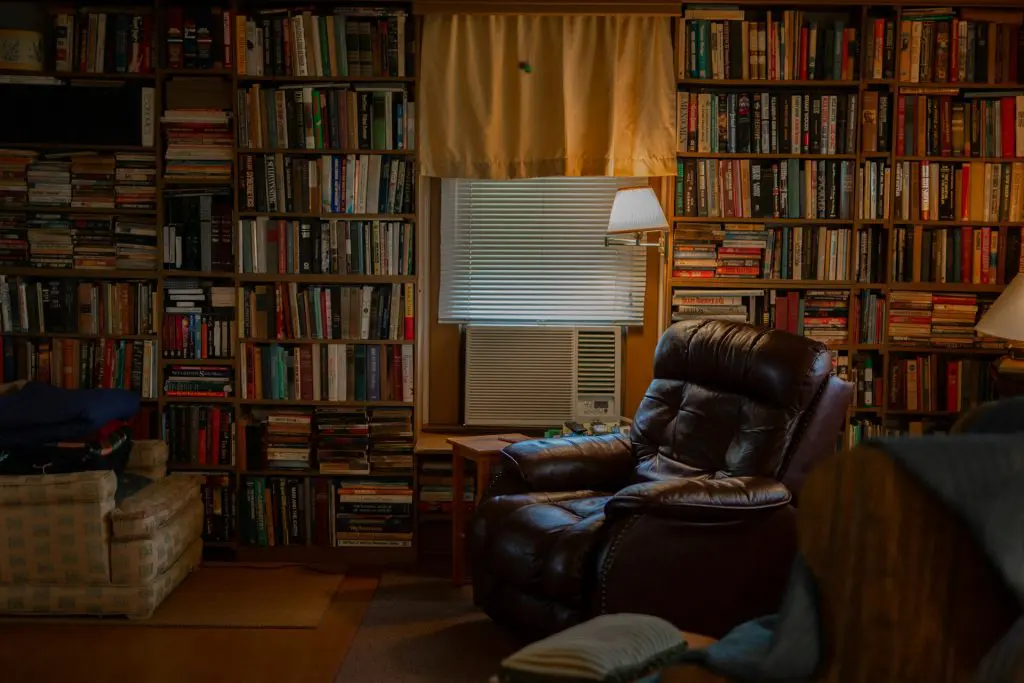
An organized home library not only enhances the aesthetics of your space but also makes it easier to find and select books. Here are some popular systems for organizing your collection:
- By Genre: Grouping books by genre (like fiction, non-fiction, mystery, science fiction, it easy to locate a book that suits your current reading mood. It's perfect for readers with diverse interests.
- By Author: Arranging books alphabetically by the author's last name is a classic library organization method, ideal for readers who have favorite authors and like to read series in order.
- By Color: Organizing books by the color of their spines creates a visually striking display. It's more aesthetic than functional but can be a fun way to add a design element to your room.
- Chronologically: For history buffs or those who enjoy classics, organizing books in chronological order by publication or historical period can be enlightening.
- By Size: Arranging books by size can create a neat, streamlined look on your shelves.
For cataloging your collection for easy access, consider these tips:
- Use a Spreadsheet: Create a simple spreadsheet listing the book title, author, genre, and its location on your shelves. This can be particularly useful for larger collections.
- Library Apps: There are several apps available that allow you to catalog your books digitally. Many of them let you scan the book's ISBN to automatically add details.
- Labeling System: Consider labeling the shelves or sections of your library according to your organizational system. For example, genre labels can help guide you directly to your area of interest.
- Keep a Reading Journal: Maintain a journal or a digital document of the books you’ve read and the ones you want to read. This can be a great way to track your reading journey.
- Frequent Reassessment: Regularly reassess your organization system. As your collection grows and changes, your organization method might need to adapt.
FURNITURE AND SHELVING
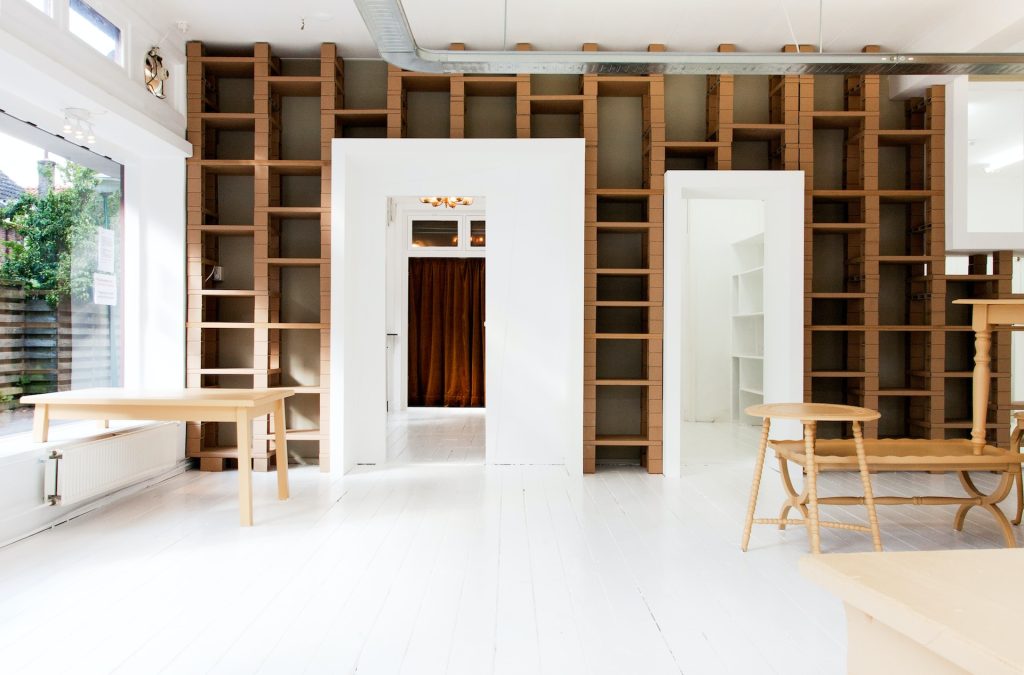
Choosing the Right Shelves
Selecting the right shelving is a crucial step in creating your home library. DIY shelving allows for customization and can be a fun project, but it requires time and some level of skill. Second-hand shops offer unique, often vintage shelves at lower prices, adding character to your library.
However, if you seek convenience, uniformity, and the ease of finding shelves that fit your specific space and style requirements, budget-friendly retailers are your best bet. They provide a wide range of affordable, ready-to-assemble shelving and console options that can suit various tastes and spaces, making them an ideal choice for most home libraries.
When furnishing your home library, comfort is key. Choose a comfortable chair or sofa that invites hours of reading. Add adequate lighting to ease eye strain, with floor lamps or reading lights. Finally, accessorize with cushions for extra comfort and decorative elements that reflect your personal style and enhance the cozy atmosphere.
DESIGN AND AESTHETICS
Creating a visually appealing and comfortable home library involves thoughtful design choices:
- Cozy Decorations: Add soft rugs, throw blankets, and plush pillows for a cozy, inviting feel.
- Lighting: Use a combination of natural light, floor lamps, and reading lamps to create a warm and welcoming atmosphere.
- Color Schemes: Choose calming and harmonious colors for walls and furnishings to create a serene reading environment.
- Personal Touches: Incorporate artwork, family photos, and souvenirs that reflect your personality and interests.
- Plants and Greenery: Add indoor plants for a touch of nature and to improve air quality.
- Unique Elements: Display unique or antique items to give your library a distinct and personal character.
Embarking on the journey of creating your home library is not just about organizing books; it's about crafting a personal haven of literature and comfort that will enrich your life one page at a time.

